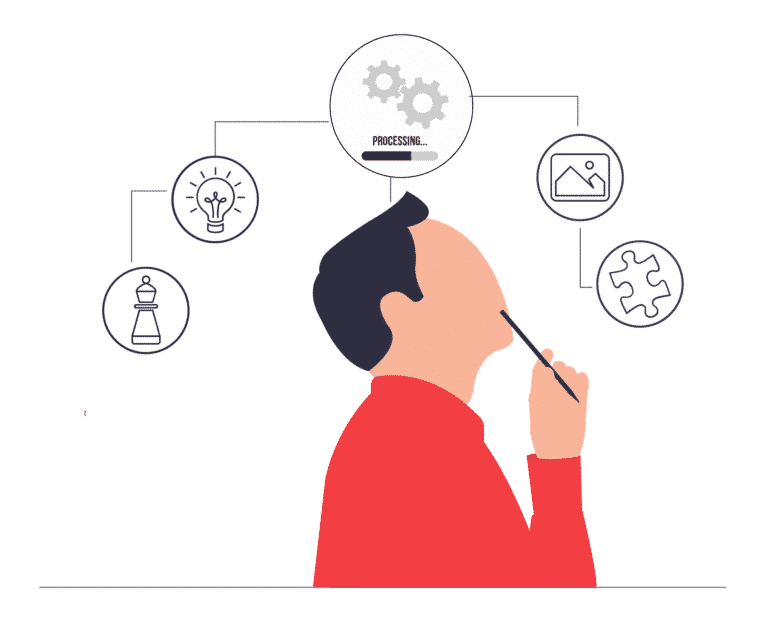Performance management is a critical component of any successful organization. It’s the process through which companies ensure that their employees are working at their best, achieving their goals, and contributing to the overall success of the business. In today’s fast-paced and competitive business world, effective performance management is not just a nice-to-have; it’s a necessity.
In this guide, we will walk you through the fundamentals of performance management, helping you understand what it is, how to set up a performance management system, the key components to consider, and best practices for implementing it in your organization. Whether you’re an HR professional looking to improve your company’s performance management processes or a manager seeking to enhance your team’s productivity and growth, this guide will provide you with the knowledge and tools you need to get started on the right track.
So, let’s dive into the world of performance management and discover how it can drive your organization’s success.
Choosing the right performance management system
Selecting the appropriate performance management system for your organization is a pivotal decision that can significantly impact your overall success. The first step in this process involves a careful assessment of your company’s specific needs, goals, and culture. Consider the size of your workforce, the nature of your industry, and your organization’s unique objectives.
One crucial factor to consider is the scalability of the system. Ensure that it can adapt as your company grows, accommodating changes in the number of employees and the complexity of your operations. Additionally, compatibility with your existing HR software and systems is essential to ensure a seamless integration process.
Another key consideration is user-friendliness. The chosen system should be intuitive and easy for both employees and managers to navigate. Training requirements should be minimal to maximize adoption and minimize disruptions to daily operations.
Moreover, evaluate the system’s capabilities for tracking and analyzing performance data. It should provide insightful metrics and reports that facilitate data-driven decision-making. Look for features that enable goal setting, performance evaluations, and feedback mechanisms to be integrated cohesively into the platform.
Ultimately, your choice of a performance management system should align with your organization’s values and goals, fostering a culture of continuous improvement and development. A well-selected system will not only streamline performance management processes but also enhance employee engagement, productivity, and overall business performance.
Integrating performance management into HR processes
Integrating performance management into your HR processes is a strategic move that can have a profound impact on your organization’s success. It’s not merely an isolated activity but a cohesive part of your broader HR strategy. To achieve this integration effectively, you need to consider several critical aspects.
Firstly, alignment with your organization’s goals and values is crucial. Performance management should be tightly integrated with your company’s mission and objectives. This alignment ensures that individual employee goals and performance evaluations are in sync with the overarching goals of the organization.
Secondly, communication plays a pivotal role. HR professionals must collaborate closely with managers and employees to ensure that the performance management process is transparent and well-understood. Clear communication about expectations, performance standards, and evaluation criteria is essential to prevent misunderstandings and promote engagement.
Furthermore, HR teams should work on creating a supportive culture around performance management. This means fostering an environment where employees feel comfortable discussing their goals, challenges, and development needs. It’s about encouraging ongoing dialogue rather than treating performance evaluations as a once-a-year event.
Additionally, the integration of technology can streamline HR processes significantly. Leveraging HR software that integrates performance management modules can simplify tasks like setting goals, providing feedback, and tracking progress. This technology can also generate valuable data insights that aid in making informed HR decisions.
In conclusion, integrating performance management into HR processes is a multifaceted endeavor that requires alignment, communication, culture-building, and the effective use of technology. When done thoughtfully, it can lead to more engaged employees, improved performance, and ultimately, greater organizational success.
Key components of an effective performance management system
To establish an effective performance management system, you need to understand its core components. These components work together to create a framework that aligns employee performance with organizational goals, encourages growth, and fosters a culture of continuous improvement.
Goal Setting and Alignment: The foundation of any performance management system lies in setting clear, measurable, and achievable goals. These goals should be aligned with the broader objectives of the organization. When employees have a clear understanding of what’s expected of them and how their contributions tie into the company’s success, they are more motivated and focused.
Continuous Feedback and Communication: Effective communication is at the heart of performance management. Regular feedback sessions between managers and employees provide opportunities to discuss progress, address challenges, and offer recognition. A culture of open and constructive feedback ensures that individuals stay on track and can make necessary improvements.
Employee Development and Growth: A robust performance management system should include plans for employee development and growth. This involves identifying areas where individuals can enhance their skills, providing opportunities for training and mentorship, and aligning these development efforts with career progression within the organization.
Performance Evaluation: Fair and objective performance evaluations are essential for gauging employee progress and contributions. The evaluation process should be consistent, transparent, and based on predefined criteria. It should not only assess past performance but also identify areas for improvement and growth.
Recognition and Rewards: Recognizing and rewarding outstanding performance is a vital component of motivation and retention. Incentives, whether monetary or non-monetary, can encourage employees to excel and contribute to a positive workplace culture.
By understanding and implementing these key components, you can establish a performance management system that not only improves individual performance but also contributes to the overall success of your organization. These elements form the backbone of a system that drives productivity, engagement, and employee satisfaction.
Implementing performance management in your organization
Implementing performance management within your organization is a pivotal step towards achieving your strategic objectives. It requires careful planning, collaboration, and a commitment to fostering a culture of continuous improvement. Here are some key considerations for effectively integrating performance management into your company:
Involving HR in the Process: Human Resources (HR) plays a central role in the successful implementation of performance management. HR professionals can help design and customize the system to fit the organization’s unique needs. They also facilitate training and communication efforts, ensuring that all employees and managers understand the purpose and processes of performance management.
Training Managers and Employees: To ensure that performance management is embraced across the organization, it’s crucial to provide training to both managers and employees. Managers need to learn how to set clear expectations, provide feedback, and conduct performance evaluations effectively. Employees, on the other hand, should understand how the system works, how their contributions are measured, and how they can actively participate in the process.
Communicating the Benefits of Performance Management: Transparency and communication are vital during implementation. Clearly articulate the benefits of performance management, such as individual growth opportunities, increased job satisfaction, and alignment with the company’s mission. Address any concerns or misconceptions to gain buy-in from all stakeholders.
By involving HR, providing comprehensive training, and emphasizing the advantages, you can successfully implement performance management within your organization. Remember that it’s not just a process but a cultural shift that fosters accountability, development, and a shared commitment to achieving organizational goals. As performance management becomes ingrained in your company’s DNA, you’ll find that it not only enhances individual performance but also contributes to the overall success and competitiveness of your organization.
Best practices for conducting performance reviews
Performance reviews are a critical component of any performance management system. When done effectively, they provide a structured platform for evaluating employee performance, setting goals, and fostering growth. Here are some best practices to ensure that your performance reviews are constructive and beneficial for both employees and the organization:
Conducting Fair and Objective Evaluations: The foundation of a successful performance review is fairness. Ensure that your evaluation process is based on predefined criteria and that all employees are assessed using the same standards. Avoid biases and subjective judgments, and rely on objective data and evidence when discussing performance.
Providing Constructive Feedback: Performance reviews should be an opportunity for a two-way dialogue between the employee and the manager. Encourage open communication, where employees can share their perspectives and concerns. Offer specific, actionable feedback that highlights both strengths and areas for improvement. Constructive feedback should focus on behaviors and outcomes rather than personal characteristics.
Setting Performance Improvement Plans: If an employee is not meeting performance expectations, the performance review is the ideal time to create a performance improvement plan (PIP). A PIP outlines specific actions, timelines, and support mechanisms to help employees improve their performance. It should be a collaborative effort between the employee and manager.
These best practices can turn performance reviews from dreaded annual events into valuable opportunities for growth and development. They promote transparency, fairness, and accountability within the organization. When employees see that their performance is being evaluated fairly and that their managers are genuinely invested in their success, it can lead to increased motivation, engagement, and improved overall performance.
Overcoming common challenges in performance management
While performance management is a valuable process for improving organizational success, it is not without its challenges. Recognizing and addressing these challenges is essential to ensure the effectiveness of your performance management system. Here are some common hurdles and strategies to overcome them:
Handling Resistance to Change: Change can be met with resistance, especially if employees and managers are accustomed to old performance management methods. To overcome this, communicate the benefits of the new system clearly. Provide training and support to ease the transition and address concerns openly.
Dealing with Underperforming Employees: Addressing underperforming employees can be a sensitive issue. To tackle this challenge, ensure that performance expectations are communicated clearly from the beginning. When performance issues arise, engage in open and constructive discussions with employees to identify the root causes and develop improvement plans.
Ensuring Consistency in Evaluations: Consistency is crucial to maintaining fairness in performance evaluations. To overcome this challenge, establish clear evaluation criteria and ensure that all managers are trained in their application. Use calibration sessions to review and standardize ratings across the organization.
Adapting to a Remote Work Environment: The shift to remote work has introduced new challenges in performance management. To address this, leverage technology for virtual performance reviews and maintain regular communication with remote employees. Focus on outcomes and deliverables rather than monitoring daily activities.
By recognizing and proactively addressing these common challenges, you can enhance the effectiveness of your performance management system. It’s essential to view challenges as opportunities for growth and improvement, and by doing so, you can create a performance management process that supports both individual and organizational success.
Measuring the effectiveness of your performance management system
After implementing a performance management system, it’s crucial to measure its effectiveness to ensure that it’s achieving the desired outcomes and contributing to organizational success. Here are key steps to assess and improve the impact of your performance management system:
Key Performance Indicators (KPIs): Begin by defining KPIs that align with your organization’s goals. These could include metrics like employee engagement scores, retention rates, productivity levels, and the achievement of individual and team goals. Tracking these indicators over time provides valuable insights into the system’s impact.
Feedback and Surveys: Gather feedback from employees, managers, and HR professionals about their experiences with the performance management system. Use surveys and interviews to understand what’s working well and where improvements are needed. Addressing feedback can lead to system refinements that better meet your organization’s needs.
Data Analytics: Leverage data analytics to assess the system’s effectiveness. Analyze performance data to identify trends, such as areas where employees consistently excel or struggle. Use this information to make data-driven decisions about training, development, and process improvements.
Continuous Improvement: Recognize that performance management is an evolving process. Regularly review and refine your system to align with changing organizational needs and industry best practices. Be open to adopting new technologies or methodologies that can enhance the system’s efficiency and effectiveness.
Employee Development: Evaluate the impact of the system on employee development and growth. Are employees receiving the support and opportunities they need to improve their skills and advance in their careers? A successful performance management system should contribute to talent development.
In conclusion, measuring the effectiveness of your performance management system is an ongoing process that requires a commitment to gathering data, seeking feedback, and making improvements. A well-evaluated system not only boosts employee engagement and productivity but also helps organizations stay competitive in today’s dynamic business environment.
Conclusion
In conclusion, performance management is not just an HR buzzword; it’s a strategic tool that can transform your organization. By implementing a robust performance management system and following best practices, you can empower your employees to excel, align their goals with the company’s objectives, and foster a culture of continuous improvement.
Remember that performance management is not a one-time task but an ongoing process. It requires dedication, communication, and a commitment to growth. When done effectively, it can lead to higher employee engagement, improved productivity, and ultimately, greater success for your organization.
So, whether you’re just starting to explore performance management or looking to refine your existing processes, use this guide as your roadmap to navigate the world of performance management, and watch your organization thrive.
Optimize your hiring process with Testlify and make efficient, data-driven talent decisions. Streamline HR resources and find the best candidates effortlessly. Try Testlify today and revolutionize your recruitment strategy!








